Airport Etiquette Tips for Travelers
Airports are often referred to as the gateways to the world. They serve as bustling hubs where diverse cultures converge. With millions of passengers passing through each day, mastering airport etiquette is essential for ensuring a seamless and harmonious travel experience. This comprehensive guide will delve into ten indispensable tips for travelers, encompassing every aspect of the airport journey. From the early stages of check-in to the final moments of departure, these guidelines will not only enhance your personal travel experience but also contribute to a more courteous and efficient atmosphere for everyone.
1. Early Arrival: The Foundation of Stress-Free Travel
Arriving at the airport well in advance is the cornerstone of stress-free travel. While the recommended time may vary based on factors such as the airport’s size and the time of day, to minimize stress and ensure a smooth check-in process, consider arriving at the airport two hours prior to your domestic flight and allowing three hours for international flights.. This early arrival not only provides a buffer for unexpected delays but also allows ample time for check-in, security clearance, and navigating the airport.
For international flights, especially those involving customs and immigration procedures, arriving even earlier is advisable. Being punctual not only reduces stress for yourself but also contributes to a smoother flow of passengers through security and check-in, ensuring a more organized and efficient airport environment.
2. Streamlined Check-in Processes
Technology has revolutionized the check-in process. It offers travelers convenient options to reduce wait times and streamline their journey. Many airlines provide online check-in services. In addition, they allow passengers to complete the check-in process from the comfort of their homes or on-the-go. Utilizing online check-in not only saves time but also helps you secure preferred seats and reduces the need for extensive interaction at the airport check-in counters.
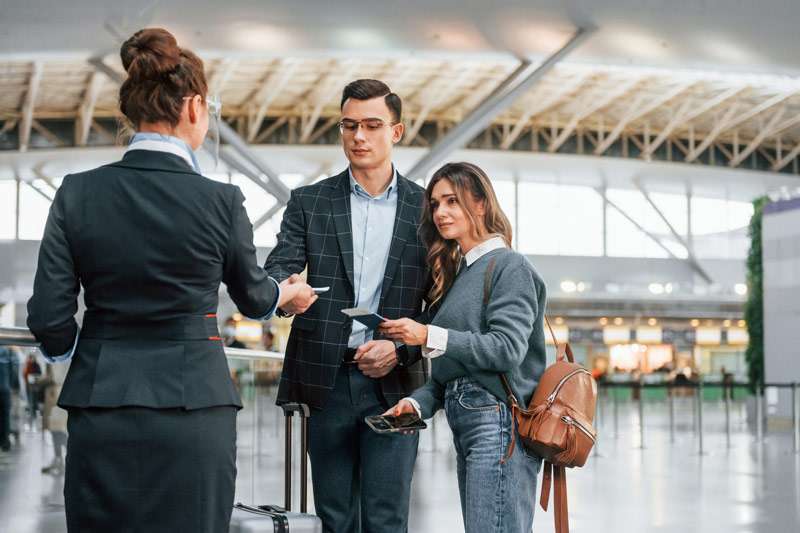
Furthermore, the adoption of mobile boarding passes minimizes reliance on printed documents, contributing to a more sustainable and eco-friendly travel experience. Familiarize yourself with the check-in options provided by your airline, and embrace technology to make your airport journey more efficient.
3. Respectful Security Screening
Navigating security checkpoints can be a source of anxiety for many travelers. Approaching this process with awareness and courtesy can make it more manageable for everyone. Ensure a hassle-free screening experience by familiarizing yourself with the guidelines established by the Transportation Security Administration (TSA).
Be prepared to remove your shoes, belts, and jackets before reaching the screening point. Place liquids and electronics in separate bins, following the guidelines provided. This not only expedites the process for yourself but also contributes to a faster and more efficient screening for all passengers.
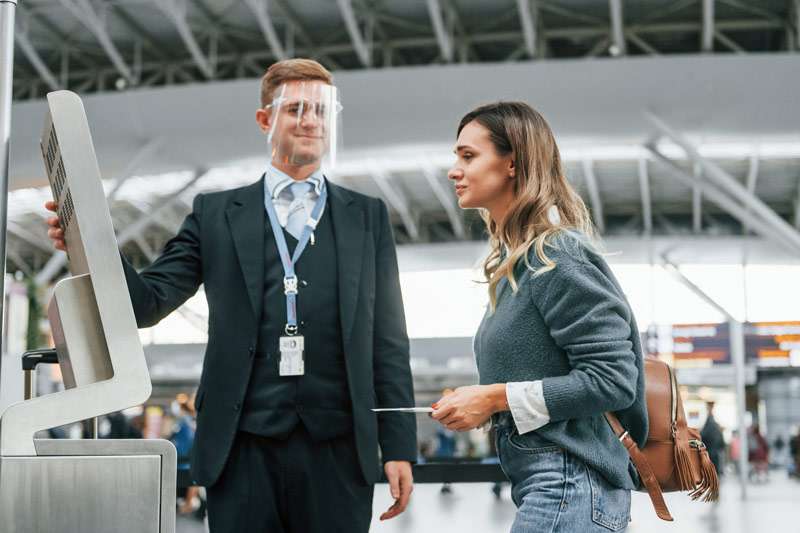
Maintain a patient and cooperative attitude towards security personnel who are working diligently to ensure the safety of all travelers. Avoid unnecessary delays by following the rules and guidelines, and remember that a considerate approach to security screening contributes to the overall efficiency of the airport.
4. Mindful Use of Airport Amenities
Airports are equipped with various amenities to enhance the travel experience. For instance, from lounges and relaxation zones to duty-free shops and dining areas. While these amenities are designed for the comfort and convenience of travelers, it’s essential to use them with mindfulness and consideration for others.
Keep noise levels to a minimum in shared spaces like waiting areas and lounges. Respect the need for quiet relaxation or focused work. Be mindful of personal space when selecting seating. Ensure that your belongings do not encroach on the space of neighboring passengers. Additionally, if reclining seats are available in designated areas, be aware of the space you occupy and how it may affect others around you.
5. Efficient Boarding Procedures
The boarding process marks a critical phase in any journey. Adhering to the airline’s boarding instructions is crucial for a smooth and organized experience. Familiarize yourself with the boarding zones and procedures outlined by the airline. Wait patiently for your turn to board.
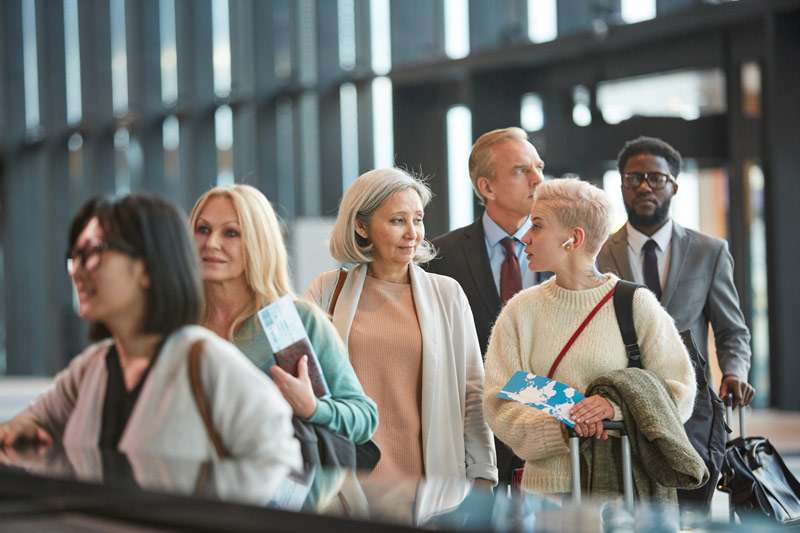
Maintain an orderly queue, respecting the personal space of fellow travelers. Be prepared to present your boarding pass and identification. Follow the instructions of airline staff and crew. Once on board, stow your carry-on luggage efficiently in the overhead compartments. Avoid blocking the aisle or causing unnecessary delays by settling into your seat promptly.
6. Politeness in the Air
As the plane takes to the skies, the principles of courtesy and consideration must continue to prevail. Respect the personal space of fellow passengers, refraining from intrusive behavior or excessive noise. Before reclining your seat, consider the impact it may have on the person seated behind you. If possible, communicate your intention to recline.
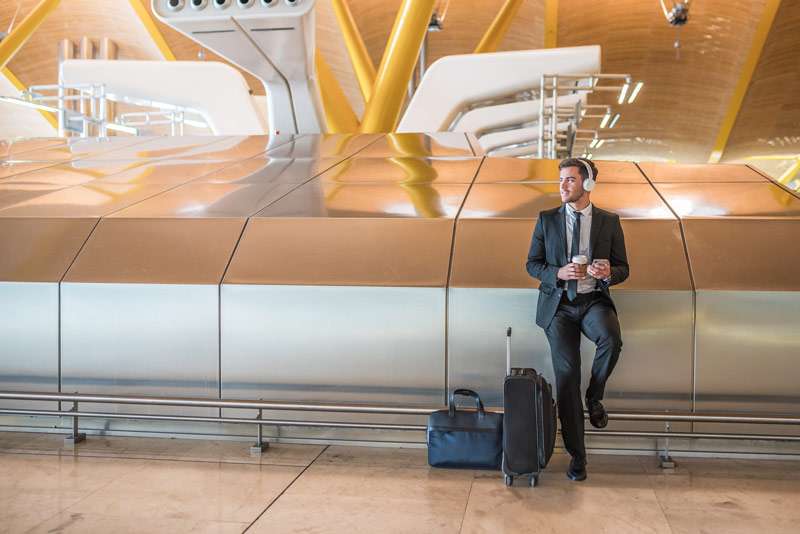
Engage in quiet activities during the flight, such as reading or working on a laptop. Use headphones when listening to music or watching movies. Maintain good hygiene throughout the journey. Understand that the close quarters of an airplane necessitate a considerate approach to personal care.
7. Mindful Reclining
The issue of reclining seats on airplanes has long been a topic of debate among travelers. While the ability to recline offers added comfort, it can also encroach on the personal space of the passenger behind you. Before reclining your seat, take a moment to assess the needs and preferences of those around you.
If the person behind you is tall or working on a laptop, consider discussing your intention to recline with them. Finding a compromise, such as reclining partially or at specific times during the flight. Open communication and a willingness to find middle ground contribute to a more harmonious in-flight experience for everyone.
8. Thoughtful Use of Electronic Devices
In the era of modern travel, electronic devices have become indispensable companions for many passengers. Whether for communication, entertainment, or work, these devices play a crucial role in the travel experience. However, it’s essential to use electronic devices with consideration for those around you.
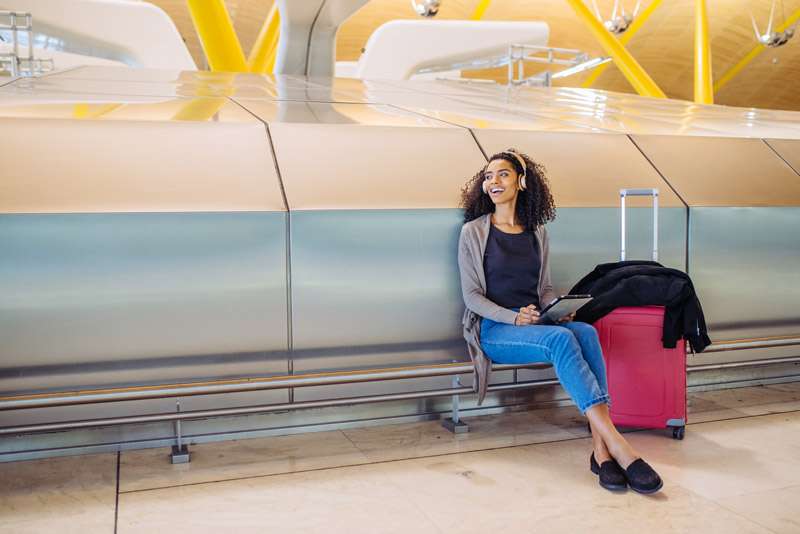
Keep the volume of your devices at a reasonable level, especially in shared spaces like waiting areas and lounges. Use headphones when listening to music, watching movies, or engaging in video calls to avoid disturbing fellow travelers. When using laptops or tablets, be mindful of personal space, ensuring that your devices do not encroach on the seating area of neighboring passengers.
9. Patience During Delays
Flight delays are an inevitable aspect of air travel. This is influenced by factors ranging from weather conditions to technical issues. When faced with unexpected delays, maintaining patience and a positive attitude is key to a more enjoyable experience. Rather than expressing frustration to airline staff, who are working diligently to manage the situation, focus on adapting to the circumstances.
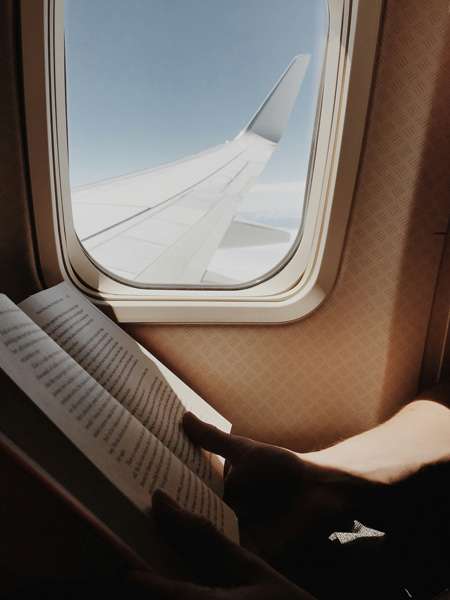
Use the additional time productively, whether it’s catching up on reading, responding to emails, or simply taking a moment to relax. Avoid contributing to a tense atmosphere by remaining courteous to fellow travelers, recognizing that everyone is navigating the challenges of travel together. A patient and adaptable mindset not only benefits your own well-being but also contributes to a more pleasant airport environment.
10. Gracious Arrival and Departure
As you arrive at your destination, extend the same level of courtesy and consideration displayed throughout your journey. Respect local customs and regulations, following immigration and customs procedures with diligence. Be mindful of cultural differences, adapting your behavior to the norms of the destination country.
When departing the aircraft, allow fellow passengers to disembark before retrieving your belongings and exiting. This simple gesture contributes to a smoother and more efficient disembarkation process. Express gratitude to the flight crew for their service, acknowledging their efforts in ensuring a safe and pleasant flight.
In conclusion, Mastering airport etiquette is an art that goes beyond individual preferences; it is a collective effort to create a positive and efficient travel environment. By adhering to these ten tips, you not only enhance your personal travel experience but also contribute to a more harmonious and considerate atmosphere for all passengers. Remember that courtesy and consideration are the cornerstones of a positive travel experience, and by embodying these principles, you can navigate the skies with grace. As you embark on your journeys, keep in mind that each traveler plays a role in shaping the airport experience for themselves and others. Safe travels!
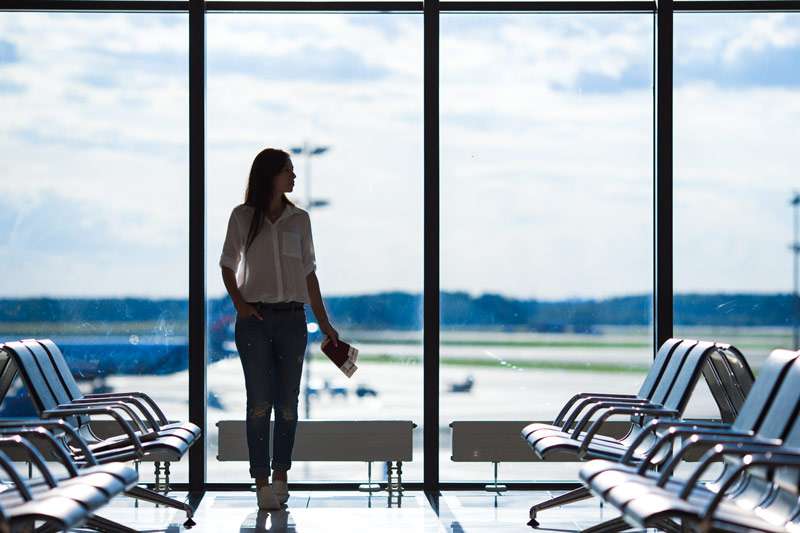
0 Comments